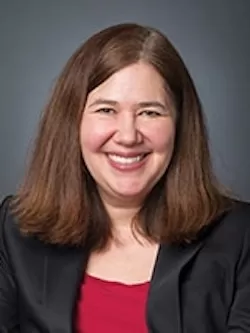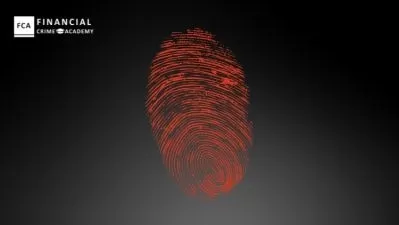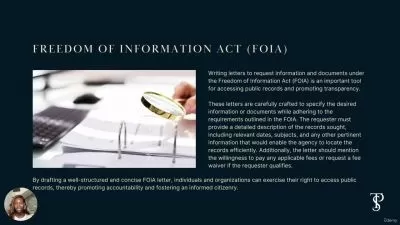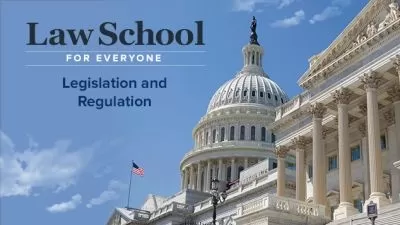Law School for Everyone: Litigation, Criminal Law, Civil Procedure, and Torts
Taught By Multiple Professors
25:22:03
Description
To many people, the law is both powerful and mysterious. We depend on lawyers to help us navigate rules, standards, and procedural codes that have been around for hundreds of years. Because we depend on their specialized skills in argumentation, logic, and critical thinking, we may wonder how they come to know so much about the inner workings of the law.
The answer: law school. The refined skills lawyers wield every day in courtrooms across the country are the result of years of study. As much as we’d like to cultivate these very same skills, the truth is that you cannot know how a lawyer thinks and works without studying the law itself.
Even if you have no intention of joining the legal profession, learning how American law works, and how lawyers and judges operate within that law, is a critical part of any well-rounded citizen’s understanding of one of the central foundations of the American experiment.
Two things, however, keep many of us from attending law school: money and time. Law school is notoriously costly and typically results in hundreds of thousands of dollars of debt. Also, students are required to give years of their lives to studying how the law works—a commitment that involves tackling mountains of required reading every night.
Law School for Everyone brings four exceptional professors from four of the nation’s most distinguished law schools right to you, providing you with much of the foundational knowledge of expert lawyers without the enormous time and financial commitments. Over the span of 48 lectures, these experienced lawyers and teachers recreate key parts of the first-year student experience, introducing you to four main areas of law most every beginning student studies:
- litigation and legal practice,
- criminal law and procedure,
- civil procedure, and
- torts.
Enriched with famous cases from the annals of American law, powerful arguments by some of history’s most successful lawyers, and Supreme Court rulings that provide insights into how our legal system has evolved since the nation’s founding, Law School for Everyone will teach you how to approach the law from the perspective of the best attorneys and high-court judges. Most important: No law degree is required for you to gain access to this intimidating—but surprisingly rich and exciting—field.
Litigation and Legal Practice
Law School for Everyone is organized into four 12-lecture sections that explore, in-depth, one of the cornerstones of a first-year law school student’s experience. Each section is delivered by a law professor who specializes in teaching their respective subjects.
You’ll start with 12 lectures on litigation and legal practice. Delivered by Professor Molly Bishop Shadel of the University of Virginia School of Law, this section offers a valuable orientation to the study of law. You’ll explore how our legal system is the direct result of democratic values, how the system works, and why we teach law the way we do.
“Over time, our system has achieved some amazing things: protections for civil rights, free speech, equal protection, due process, the right of each citizen to vote—innovations which keep our social fabric strong,” Professor Shadel says. “And each one of these social goods is the direct result of litigation.”
These lectures offer eye-opening answers to many questions about the subtle art and craft of litigation and the behind-the-scenes lives of lawyers. Questions like:
- What are some dilemmas a lawyer can face when representing clients?
- How does a lawyer craft an exceptional opening and closing argument?
- How do lawyers handle issues like jury selection and problematic evidence?
- When—and why—do lawyers raise objections during a trial?
You’ll also be prompted to rethink – and perhaps change – previously held conceptions about how lawyers work, and about the issues they struggle with each and every time they step in the courtroom.
Professor Shadel’s lectures prompt you to think about:
- the place our judicial system occupies in the balance of powers;
- the importance of credibility, logic, and pathos in the construction of an argument;
- whether or not someone who committed a crime should be released on appeal due to procedural errors; and
- why some trials, such as the Scopes trial or the O.J. Simpson case, capture the public imagination while others don’t.
By the time you finish these lectures, you’ll realize with startling clarity why legal training is valuable well beyond the courtroom and the other places lawyers work.
“If you can think like a lawyer, you have gained valuable insight into how things get done in this country,” Professor Shadel says. “And if you can think like a courtroom lawyer, then you are able to apply that knowledge quickly and use it to articulate your positions aloud. That’s a valuable skillset for anyone to have, particularly in a representative democracy such as ours.”
Criminal Law and Procedure
Government power is at its absolute maximum when a person is arrested and charged with a crime, and when the government tries to take away that person’s property, their liberty, or even their life. It’s an awesome power, one that must always remain subject to the rule of law.
In the second part of Law School for Everyone, Professor Joseph L. Hoffmann of Indiana University’s Maurer School of Law guides you through his area of expertise: criminal law and procedure. It’s an area of law dramatized by countless television shows and films, and in these lectures, Professor Hoffmann reveals how it all works in real life.
You’ll explore:
- how our legal system defines a crime, both historically and today;
- how lawyers, courts, and juries work together to bring about justice; and
- how legal rules and standards try to make criminal cases as fair as possible.
Criminal law is anything but simple. For hundreds of years, we’ve been enmeshed in fierce debates about how it works—and how it doesn’t work. Never shying away from difficult topics, Professor Hoffmann gives you the background behind some of criminal law’s most defining issues, including:
- the role of mens rea, or the guilty mind, in criminal cases, a concept developed centuries ago as part of the common law of crimes and defined as everything from “vicious will” to “general intent”;
- the constitutional enigma of the “cruel and unusual punishments” clause, rooted in the language of the Eighth Amendment, which regulates the punishments society can inflict upon those who are convicted of crimes;
- the legal pyramid (and moral culpability) of homicidal crimes, which don’t require an affirmative act (for example, you can commit homicide by failing to do something you’re legally required to do, like failing to feed your infant child);
- the creation and evolution of due process and Miranda rights, a special form of advance protection designed to insure custodial police interrogations don’t violate the Fifth Amendment privilege against compelled self-incrimination.
“We’ve constructed such a complicated system of constitutional criminal procedure rights to help ensure that criminal investigations and criminal adjudications are fundamentally fair,” says Professor Hoffman. “And that’s also why our criminal law provides so many opportunities for different actors – the prosecutor, the defense lawyer, the courts, and the jury – to do the right thing and thereby fulfill the ends of justice.”
Civil Procedure
All first-year law students are required to take a course in civil procedure, which focuses on some of the most important Supreme Court cases of all time. Whether you’re a lawyer or a private citizen, understanding how civil procedure works is important for two key reasons. First, regardless of how much substantive law knowledge lawyers have, if they can’t navigate through procedural rules to vindicate their clients’ interests, their knowledge is useless. Second, private citizens should understand why lawsuits turn out the way they do, and what their procedural rights are should they find themselves in one.
In these 12 lectures by Professor Peter J. Smith of The George Washington University Law School, you’ll investigate the myriad procedures courts follow to resolve disputes about substantive rights. Rather than focus on the mechanics of actual trials, you’ll examine a broader set of questions any system of litigation must address—questions whose answers turn out to be hugely consequential for people seeking justice. Delve into important issues like:
- How many defendants can you sue in one suit?
- When can a judge resolve a case before the jury has heard any evidence?
- Why is the discovery process, despite its lack of drama, so vital to civil procedure?
- What rules prevent parties from re-litigating matters a court has already decided on?
These lectures are filled with Supreme Court cases essential to any well-rounded understanding of American law. Among them are:
- Ashcroft v. Iqbal, the 2009 case which established a new standard for evaluating complaints that does not automatically assume all a plaintiff’s factual allegations are true;
- Guaranty Trust Co. v. York, a 1945 case concerning statutes of limitations that said if the difference between a state and federal procedural rule can dictate the parties’ choice between federal or state court, the federal court has to apply the state’s rule;
- Beacon Theatres v. Westover, a dispute between two movie theaters that ended with the Supreme Court’s 1959 decision that a jury’s resolution of common questions should bind the judge, not the other way around; and
- Hansberry v. Lee, the 1940 decision in which the Supreme Court explained a class action can bind absent class members only if they’re adequately represented by the class representatives.
Civil procedure, as you’ll soon learn, is relevant in every single lawsuit. In fact, the same rules of civil procedure apply regardless of whether the suit is about torts, contracts, antitrust laws, or any other legal subject.
Torts
From slips on wet supermarket floors to missed medical diagnoses, tort law, according to Professor Edward K. Cheng of Vanderbilt Law School, often proves that fact is stranger than fiction. Torts, in a sense, deal with the law of everyday life, and over the course of 12 lectures you’ll get a whirlwind tour of this exciting, perplexing, and occasionally bizarre area of legal study.
“Tort law,” says Professor Cheng, “is frequently at the core of some of today’s biggest and most sensational lawsuits in the media. It governs an incredibly broad range of lawsuits from everyday life.”
Broadly defined, torts are private wrongs. The defendant is accused of behaving badly in some way and causing some kind of harm or injury to the plaintiff. The plaintiff sues the defendant, usually for money, but occasionally for an injunction, where the court forces the defendant to do something or stop doing something.
Importantly, torts are different from crimes, which are public, as opposed to private wrongs. In a tort case, the plaintiff is a private party who sues to vindicate a private interest.
Throughout his lectures, Professor Cheng reveals:
- what kind of behavior tort law expects from each of us;
- what, exactly, a plaintiff has to prove in tort cases to win and get damages; and
- which parties are responsible for what types of harms and why.
Along the way, you’ll learn about some of the classic tort cases and the puzzles they present.
- If the defendant sees someone drowning in a lake, does the defendant have a legal obligation to save the plaintiff?
- If a baseball leaves a stadium and hits a bystander in the head, is the stadium liable? Does it matter if this was the first baseball hit that far in 50 years?
- What happens when two quail hunters accidently fire their shotguns in the direction of a third, wounding him, but we can’t tell precisely whose shot pellet hit the victim?
Whether you’re following cases involving hot cups of fast-food coffee, drunken sailors, dangerous amusement park rides, or pet snakes, you’ll find yourself better able to make sense of the intricate legal arguments and distinctions that make up torts.
Ultimately, you’ll discover that, beneath these seemingly odd and surprising cases lies an essential humanity that makes this area such a compelling and worthy area of study.
A Civically Important Course
Law School for Everyone is packed with some of the most important, decisive, and controversial court cases in American history. Each of the cases you explore illuminates, in its own unique way, the inner workings of the nation’s judicial system and its malleability.
Here are just a few of the many cases you’ll examine, from multiple legal angles, in these 48 fascinating lectures:
- State of Florida v. George Zimmerman (2013)
- Citizens United v. FEC (2010)
- Marbury v. Madison (1803)
- State of California v. O.J. Simpson (1995)
- Miranda v. Arizona (1966)
Additionally, the lectures benefit from specially commissioned courtroom illustrations, informative animations, helpful on-screen text, photographs, video footage, and voice acting that recreates the drama of the courtroom.
Law School for Everyone: Litigation, Criminal Law, Civil Procedure, and Torts puts you in the hands of four masterful law professors who’ve built their entire careers around understanding and teaching the law in all its forms. Whether you want to continue studying how the law works, or whether you just want to join the debate over today’s (and tomorrow’s) important legal cases, let this course be your authoritative guide to one of the most fascinating and civically important professions out there.
More details
User Reviews
Rating
Taught By Multiple Professors
Instructor's CoursesMolly Bishop Shadel is a Professor of Law at the University of Virginia School of Law, where she teaches negotiations and advocacy classes and is a senior fellow at the Center for National Security Law. She graduated magna cum laude from Harvard University with an A.B. in English and American Literature and Language. Professor Shadel earned her J.D. from Columbia University.
Professor Shadel clerked for the Honorable Eugene H. Nickerson of the U.S. District Court for the Eastern District of New York. Before joining the faculty of the University of Virginia, Professor Shadel worked as an attorney at the law firm of Covington & Burling, and then at the U.S. Department of Justice’s Office of Intelligence Policy and Review. Professor Shadel joined the faculty at the University of Virginia School of Law in 2005.
Professor Shadel is the author of two books: Finding Your Voice in Law School: Mastering Classroom Cold Calls, Job Interviews, and Other Verbal Challenges and Tongue-Tied America: Reviving the Art of Verbal Persuasion. Professor Shadel is also a planning faculty member of the Leadership in Academic Matters program, a biannual, semester-long leadership course for University of Virginia professors and administrators.

The Great Courses
View courses The Great Courses- language english
- Training sessions 48
- duration 25:22:03
- Release Date 2023/05/09















